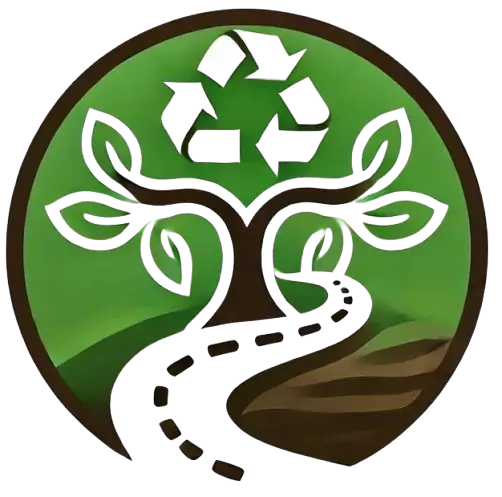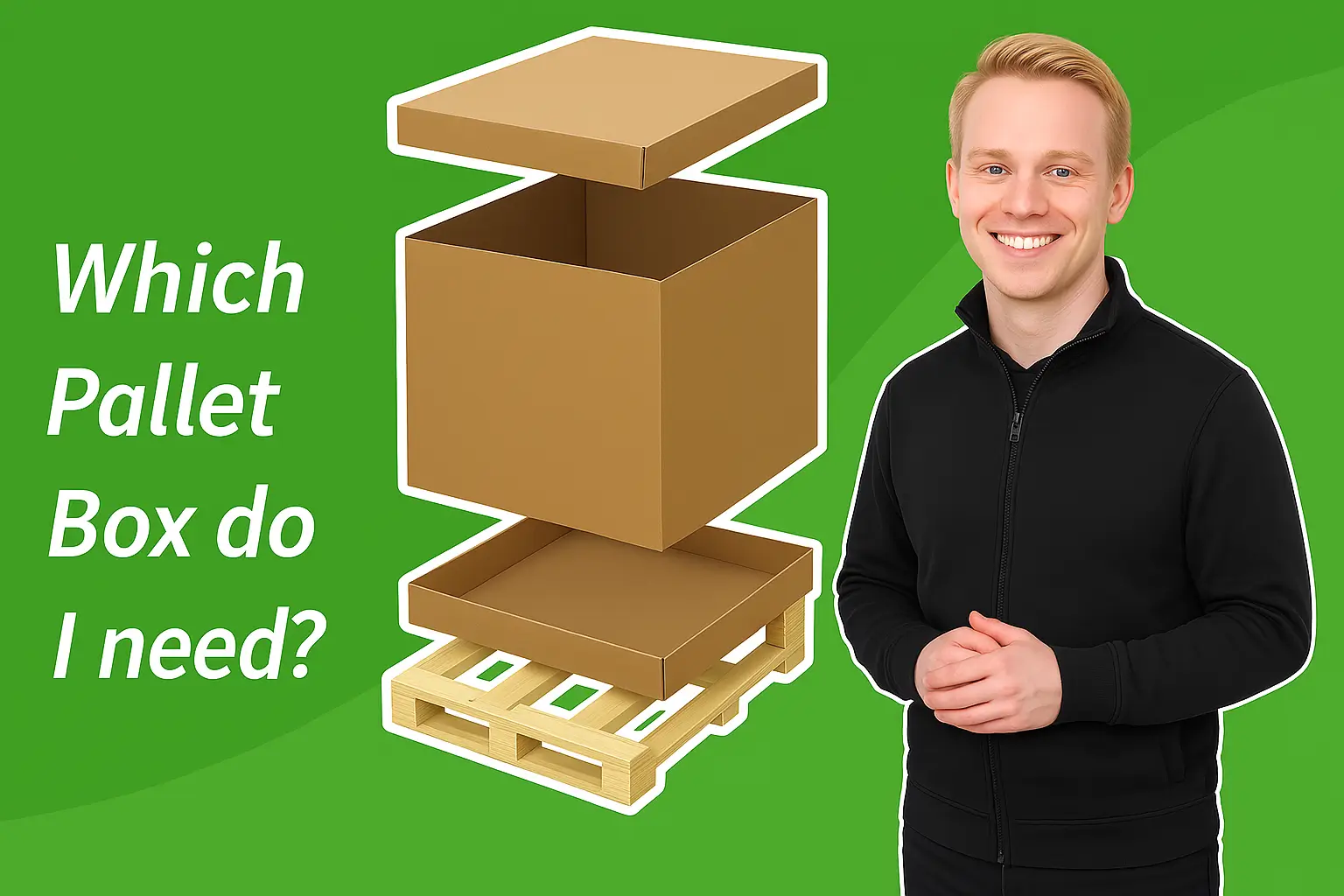The corrugated packaging industry has changed a lot. Gaylord boxes are among its most flexible and popular products. This analysis looks at Gaylord boxes in the wider world of corrugated packaging. It covers materials, their production, technical specs, uses, and sustainability.
What’s a Gaylord Box?
The name “Gaylord” comes from the Gaylord Container Corporation. They’re the ones who created and made these big boxes popular for shipping stuff. These days, when people say “Gaylord,” they mean those huge, sturdy shipping containers. It’s kind of like how everyone calls facial tissues “Kleenex,” even when they’re different brands.
Fun fact: The word “gaylord” actually has French roots. It comes from “gaillard,” which means someone who’s cheerful or full of energy.
Historical Development
The Gaylord Container Company started in the 1980s. Marvin Pomerantz and Warren Hayford founded it. However, corrugated packaging has a much older history. Corrugated paper was patented in England in 1856. The first corrugated box was made in the United States in the 1890s.
The development of corrugated packaging revolutionized shipping and storage solutions across industries. Gaylord boxes are a type of corrugated packaging made for bulk materials. These containers started as liquid carriers. They soon became popular in many industries because they are strong and versatile.
Physical Characteristics and Design
Basic Structure and Materials
A Gaylord box is a big, square or rectangular cardboard container. It is usually placed on a pallet. These containers use strong corrugated cardboard. Some special types are made from plastic or metal.
Corrugated board consists of three primary components:
- Linerboard – The flat outer facings
- Medium – The fluted paper attached to the linerboard
- Adhesive – Typically a starch-based glue that bonds the components together
The manufacturing process requires three main materials:
- Paper (for linerboard and medium)
- Steam (for forming the flutes and activating the adhesive)
- Adhesive (typically water-based, food-grade corn starch)
Corrugated Board Manufacturing Process
The corrugated board used in Gaylord boxes is manufactured through a precise process:
These trees come from sustainably managed forests. These trees are chosen for their long fibers that create strength and a smooth finish.
Pulp Creation: First, trees turn into wood chips. Then, they break down into pulp by grinding or using chemicals. This pulp can be left natural for brown cardboard or bleached for white board.
Corrugator Operation: The corrugator machine combines sheets of paper. It creates single, double, or triple wall board continuously. The corrugator has three key stages:
- Corrugating the flutes and gluing to a single liner
- Gluing the outside liner to make a rigid board
- Cutting the board to the desired size
Fluting Formation: Medium paper goes through grooved metal rollers. Heat and pressure shape it into a wave-like flute pattern. This corrugation gives the board its strength.
The fluted medium sticks to liner sheets. We use a starch-based adhesive on the flute tips. For single wall board, this involves one fluted medium and two liners. For double or triple wall boards, additional layers are added.
Cutting and Conversion: The long sheet of corrugated board gets cut into set sizes. Then, it can go through more processes like printing, die-cutting, folding, and gluing. These steps create the final packaging products.
Flute Types and Characteristics
One of the most critical aspects of corrugated board design is the flute type. Different flute profiles offer varying characteristics suitable for different applications. The common flute types include:
| Flute Type | Thickness | Flutes per Linear Foot | Characteristics and Common Uses |
|---|---|---|---|
| A Flute | 1/4″ (5mm) | 33 | Thickest and strongest; excellent cushioning; ideal for fragile items, storage boxes, furniture |
| B Flute | 1/8″ (3mm) | 49 | Good surface for printing; crush resistance; used for inner packaging, retail displays, mailer boxes |
| C Flute | 3/16″ (4mm) | 39 | Most widely used; good balance of strength and printability; common for shipping cases, furniture, glass products |
| E Flute | 1/16″ (1.5mm) | 90 | Thin with excellent printing surface; used for retail packaging, displays, pizza boxes |
| F Flute | 1/32″ (1mm) | 125 | Thinnest; sleek appearance; used for jewelry boxes, cosmetic packaging, shoe boxes |
| D Flute | 11/50″ (2mm) | 72 | Between B and E flutes; used for food packaging, pizza boxes, take-out containers |
You can combine different flute types in double or triple-wall designs. This helps achieve certain performance features. Common combinations include:
BC Flute: 6mm thickness, combining B and C flutes for enhanced stacking strength
EB Flute: 4.5mm thickness, combining E and B flutes for printability and strength
Shapes and Configurations
Gaylord boxes come in three primary shapes:
Rectangle (REC) – A common shape with four sides. It provides strong structure and makes filling and emptying easy.
Octagon (OCT) – These are eight-sided containers, known as “octobins.” They spread weight better across corners. This design boosts strength for certain uses.
High Performance Tote (HPT) – A strong rectangular box. It has top and bottom flaps and a design with four to six walls. These can include optional corner posts. They support stacking up to six units high, especially in freezer facilities.
Sizes and Dimensions
Most Gaylord boxes fit standard pallets. They match in size, weight, and purpose. This helps with stacking, storage, and transportation. Common sizes include:
- 36″ × 36″ × 36″ – classic cube shape
- 48″ × 40″ × 36″ – standard size
- 40″ × 40″ × 40″ – larger cube-style box
These dimensions fit tightly on pallets. This maximizes space and helps with shipping logistics. For full details, check the Gaylord Box Dimensions, Weight, and Specifications guide.
Structural Features and Strength
Corrugated board strength is measured in several ways:
- Edge Crush Test (ECT) – Measures the stacking strength of corrugated board. Common ratings include:
- 23 ECT (light duty)
- 32 ECT (medium duty)
- 44 ECT (heavy duty)
- Bursting Strength (Mullen Test) – This measures how well materials resist puncturing. It can reach up to 1,300# for tough jobs.
Gaylord boxes include several key structural elements:
Wall Construction – Most use double-wall or triple-wall corrugated material. Double-wall can support 1,000 to 5,000 pounds, depending on wall thickness.
Side Panels – Many models have side flaps or panels. They help with loading and unloading.
Top and Bottom Options – Various configurations exist, including:
- RSC (regular-slotted container)
- HSC (half-slotted container)
- Tray
- DI (drop-in)
Applications Across Industries
Manufacturing and Distribution
Gaylord boxes are great for moving raw materials, parts, and finished goods. They work well in factories and distribution centers. They’re also excellent for international shipping. You also need to know which end to use for lifting loaded Gaylord boxes.
The corrugated packaging market is growing fast. It is expected to increase from $178.22 billion in 2025 to $230.87 billion by 2032. This shows a CAGR of 3.77%. E-commerce is growing fast. This rise boosts demand for sustainable packaging solutions. Warehouse efficiency is key to managing this growth. Many facilities follow the 85% Rule. This rule explains why warehouse efficiency drops when occupancy rates are high.
Agriculture and Food Processing
The agricultural sector extensively uses Gaylord boxes for harvesting, storing, and shipping produce. These containers are often found in grocery stores. They hold bulk items like watermelons. In food processing, they are important for safely transporting ingredients and finished products.
Food packaging made from corrugated materials often has special coatings. Examples include Lamilux® and Greenshield®. It may also have wax treatments to protect moisture-sensitive products. Manufacturers offer bulk bins specifically designed for produce, frozen vegetables, and seafood.
Recycling and Waste Management
Recycling centers use Gaylord boxes to collect recyclables. These materials include paper, plastic, and metal. Their large capacity is ideal for holding substantial volumes of recyclables.
Corrugated cardboard is the most recycled packaging in the U.S. It has 52% recycled material in most boxes. This high recycling rate represents an extraordinary success story in sustainable packaging. If your business wants to join the circular economy, check out the Guide to Selling Pallets. It covers market value and profit. It explains how to regain value from used packaging materials.
Moving and Relocation
The moving industry really loves using Gaylord boxes. Their big size helps a ton when you’re moving homes or offices. You don’t need as many containers, which makes packing and unpacking way less of a headache. When planning a move with big containers, it helps to know how many pallets fit in a 26-foot box truck. This info lets you make the most of your rental space.
Retail and Warehousing
Retailers pack and move goods in Gaylord boxes. They use these boxes to transport items from distribution centers to stores. In warehouses, these containers help organize inventory, consolidating items to maximize space utilization.
The U.S. corrugated carton market is set to hit $41.43 billion by 2032. This growth comes from e-commerce and online shopping. They require good shipping and delivery options. For big shipping jobs, knowing how many pallets fit in a 40′ container or a 53-foot trailer is key. This helps you improve transport logistics.
Advantages and Benefits
Durability and Strength
The strength of corrugated packaging comes from its unique structure. The fluted medium between liner sheets creates an air cushion. This cushion gives a great strength-to-weight ratio and shock absorption.
Different corrugated board grades can support varying product weights. For example:
- Single-wall B or E flute with 200K/T grade can support 12-17kg
- Double-wall BC or EB flute with 200K/T grade can support 25-35kg
Cost-Effectiveness
Gaylord boxes have great volume capacity. This means you need fewer containers, which helps cut shipping and handling costs. They work with standard material handling equipment. This means you won’t need special tools or setups.
Versatility and Adaptability
You can customize corrugated packaging in many ways. Choose different flute profiles, wall builds, and paper weights. This helps meet your specific performance needs. This adaptability makes Gaylord boxes suitable for diverse applications across industries.
Smart packaging technologies are becoming a big trend in corrugated packaging. This includes QR codes, RFID, and sensors. These technologies give product information. They also ensure safety and extend shelf life. They do this by checking conditions during transport and storage. This tech advance supports Modular Palletizing Systems and automated logistics.
Sustainability and Environmental Benefits
The corrugated packaging industry has achieved substantial environmental improvements in recent years.
Additional environmental improvements include:
- 13% reduction in energy usage
- 18% reduction in water usage
- 41% reduction in acid rain contributions
- 44% reduction in smog formation
- 54% reduction in respiratory effects
- 30% reduction in eutrophication (which leads to algae blooms)
They also rely on a strong recycling system.
Space Efficiency and Stackability
Gaylord boxes stack well when full. This helps use vertical space in warehouses and during transport. Their standard dimensions ensure compatibility with pallets and racking systems, optimizing logistics operations. When empty, many designs can be folded flat, minimizing storage requirements between uses.
Key elements for a simple palletizing guide include:
- Integration
- Optimization
- Basics of warehouse tasks
Customization Options
Dress up those Gaylord boxes for your company! Put in your business details. Add your logo and include shipping instructions. It gets your brand noticed and helps people handle your stuff right. Need something special? Custom versions can tackle specific industry needs or tricky applications.



Leave a Reply